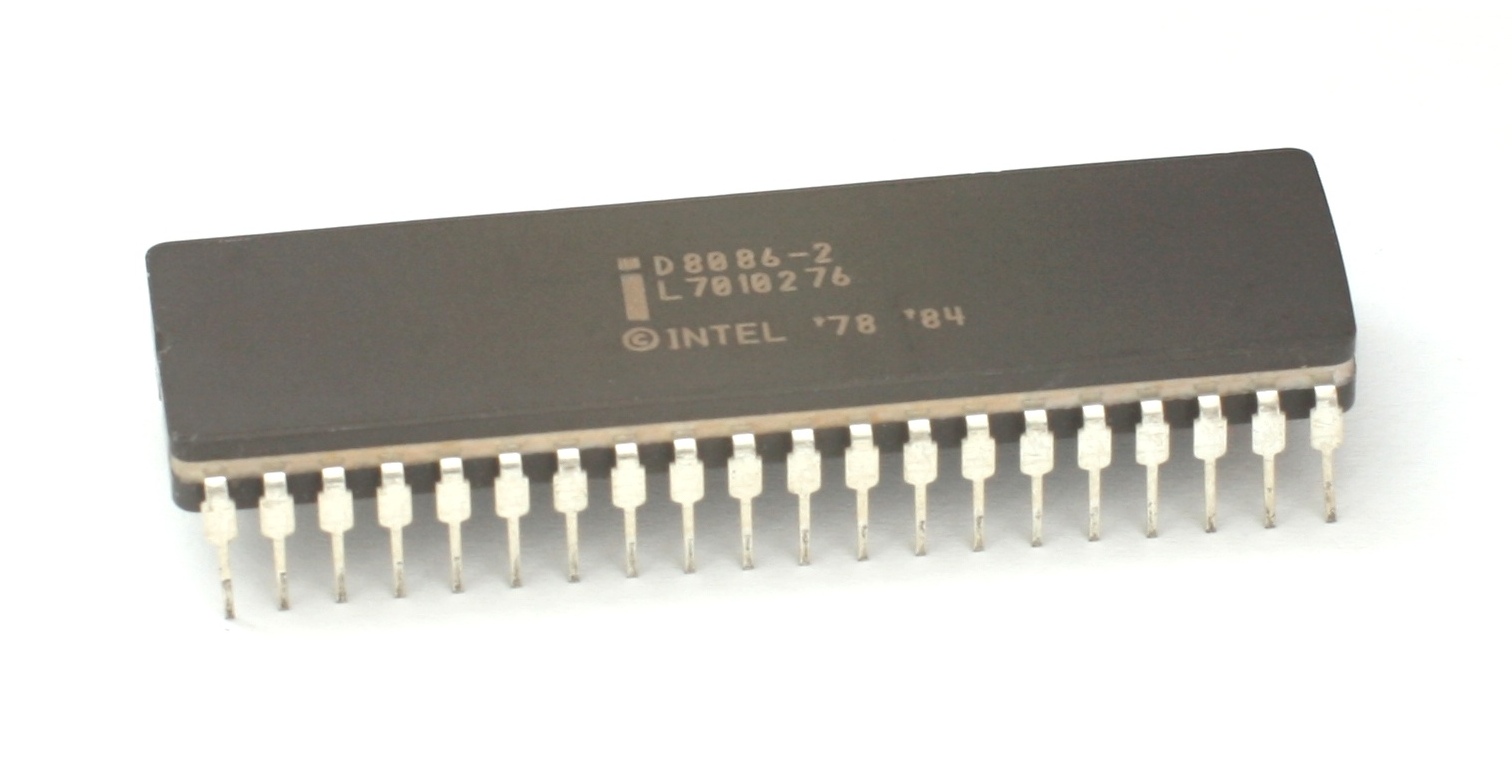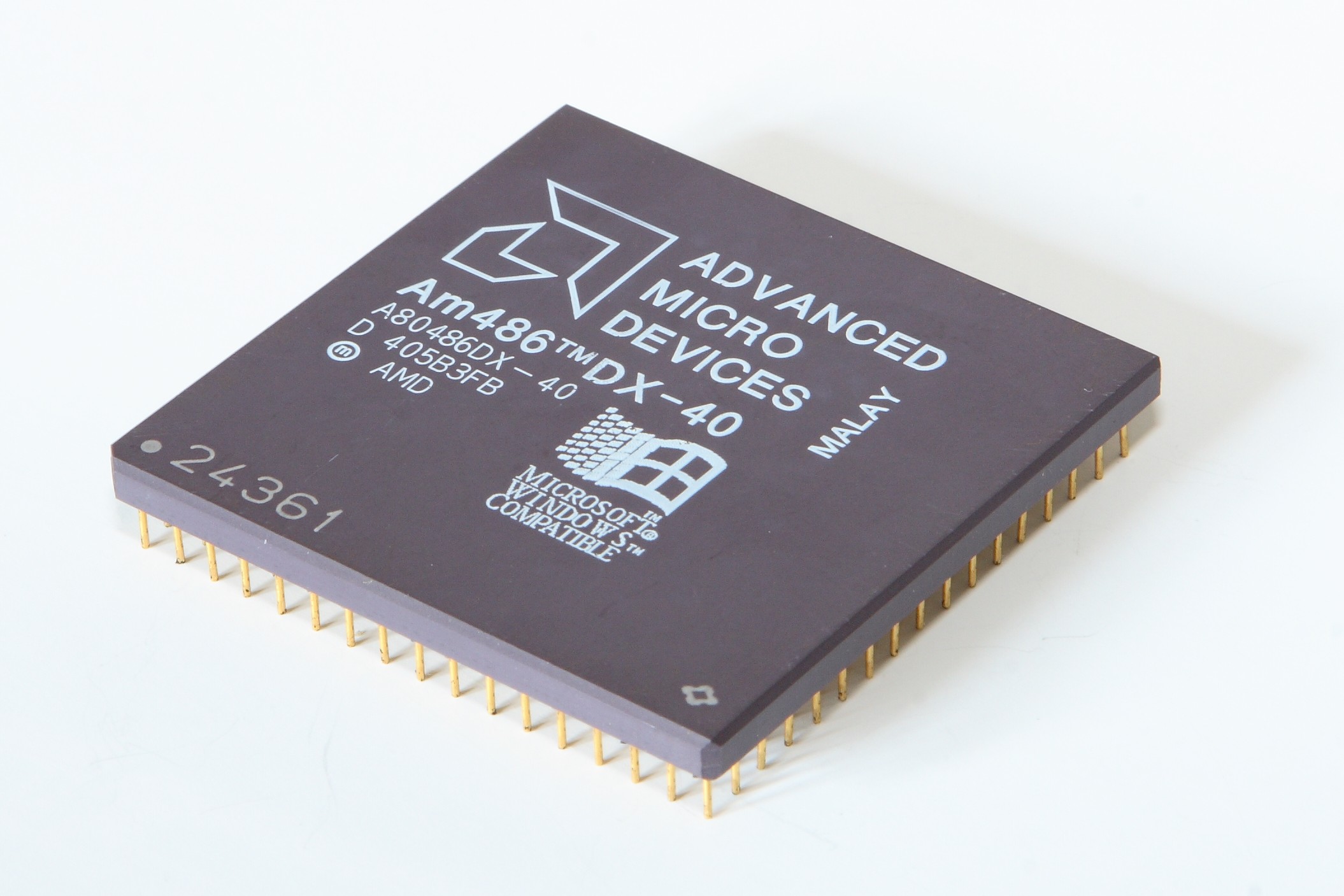|
5k86
The K5 is AMD's first x86 processor to be developed entirely in-house. Introduced in March 1996, its primary competition was Intel's Pentium microprocessor. The K5 was an ambitious design, closer to a Pentium Pro than a Pentium regarding technical solutions and internal architecture. However, the final product was closer to the Pentium regarding performance, although faster clock-for-clock compared to the Pentium. Technical details The K5 was based upon an internal highly parallel Am29000 RISC processor architecture with an x86 decoding front-end. The K5 offered good x86 compatibility and the in-house-developed test suite proved invaluable on later projects. All models had 4.3 million transistors, with five integer units that could process instructions out of order and one floating-point unit. The branch target buffer was four times the size of the Pentium's and register renaming helped overcome register dependencies. The chip's speculative execution of instructions reduced pi ... [...More Info...] [...Related Items...] OR: [Wikipedia] [Google] [Baidu] |
X86 Microarchitectures
x86 (also known as 80x86 or the 8086 family) is a family of complex instruction set computer (CISC) instruction set architectures initially developed by Intel based on the Intel 8086 microprocessor and its 8088 variant. The 8086 was introduced in 1978 as a fully 16-bit extension of Intel's 8-bit 8080 microprocessor, with memory segmentation as a solution for addressing more memory than can be covered by a plain 16-bit address. The term "x86" came into being because the names of several successors to Intel's 8086 processor end in "86", including the 80186, 80286, 80386 and 80486 processors. The term is not synonymous with IBM PC compatibility, as this implies a multitude of other computer hardware. Embedded systems and general-purpose computers used x86 chips before the PC-compatible market started, some of them before the IBM PC (1981) debut. , most desktop and laptop computers sold are based on the x86 architecture family, while mobile categories such as smartphones or ... [...More Info...] [...Related Items...] OR: [Wikipedia] [Google] [Baidu] |
Register Renaming
In computer architecture, register renaming is a technique that abstracts logical registers from physical registers. Every logical register has a set of physical registers associated with it. When a machine language instruction refers to a particular logical register, the processor transposes this name to one specific physical register on the fly. The physical registers are opaque and cannot be referenced directly but only via the canonical names. This technique is used to eliminate false data dependencies arising from the reuse of registers by successive instructions that do not have any real data dependencies between them. The elimination of these false data dependencies reveals more instruction-level parallelism in an instruction stream, which can be exploited by various and complementary techniques such as superscalar and out-of-order execution for better performance. Problem approach In a register machine, programs are composed of instructions which operate on values. The ... [...More Info...] [...Related Items...] OR: [Wikipedia] [Google] [Baidu] |
Microprocessor Report
''Microprocessor Report'' is a newsletter covering the microprocessor industry. The publication is accessible only to paying subscribers. To avoid bias, it does not take advertisements. The publication provides extensive analysis of new high-performance microprocessor chips. It also covers microprocessor design issues, microprocessor-based systems, memory and system logic chips, embedded processors, GPUs, DSPs, and intellectual property (IP) cores. History and profile ''Microprocessor Report'' was first published in 1987 by Michael Slater. Original board members included Bruce Koball, George Morrow, and J H Wharton all of whom served for many years. Originally published monthly in print, since 2000 it has been published weekly online and monthly in print. Slater left MicroDesign Resources (MDR), at the end of 1999. Typical articles describe the internal design and feature set of microprocessors from vendors such as Intel, Broadcom, and Qualcomm. The articles usually compare the ... [...More Info...] [...Related Items...] OR: [Wikipedia] [Google] [Baidu] |
AMD K5 Die2
Advanced Micro Devices, Inc. (AMD) is an American multinational semiconductor company based in Santa Clara, California, that develops computer processors and related technologies for business and consumer markets. While it initially manufactured its own processors, the company later outsourced its manufacturing, a practice known as going fabless, after GlobalFoundries was spun off in 2009. AMD's main products include microprocessors, motherboard chipsets, embedded processors, graphics processors, and FPGAs for servers, workstations, personal computers, and embedded system applications. History First twelve years Advanced Micro Devices was formally incorporated by Jerry Sanders, along with seven of his colleagues from Fairchild Semiconductor, on May 1, 1969. Sanders, an electrical engineer who was the director of marketing at Fairchild, had, like many Fairchild executives, grown frustrated with the increasing lack of support, opportunity, and flexibility within the comp ... [...More Info...] [...Related Items...] OR: [Wikipedia] [Google] [Baidu] |
Front Side Bus
A front-side bus (FSB) is a computer communication interface (bus) that was often used in Intel-chip-based computers during the 1990s and 2000s. The EV6 bus served the same function for competing AMD CPUs. Both typically carry data between the central processing unit (CPU) and a memory controller hub, known as the northbridge. Depending on the implementation, some computers may also have a back-side bus that connects the CPU to the cache. This bus and the cache connected to it are faster than accessing the system memory (or RAM) via the front-side bus. The speed of the front side bus is often used as an important measure of the performance of a computer. The original front-side bus architecture has been replaced by HyperTransport, Intel QuickPath Interconnect or Direct Media Interface in modern volume CPUs. History The term came into use by Intel Corporation about the time the Pentium Pro and Pentium II products were announced, in the 1990s. "Front side" refers to the extern ... [...More Info...] [...Related Items...] OR: [Wikipedia] [Google] [Baidu] |
AMD K5 PR75 Die
Advanced Micro Devices, Inc. (AMD) is an American multinational semiconductor company based in Santa Clara, California, that develops computer processors and related technologies for business and consumer markets. While it initially manufactured its own processors, the company later outsourced its manufacturing, a practice known as going fabless, after GlobalFoundries was spun off in 2009. AMD's main products include microprocessors, motherboard chipsets, embedded processors, graphics processors, and FPGAs for servers, workstations, personal computers, and embedded system applications. History First twelve years Advanced Micro Devices was formally incorporated by Jerry Sanders, along with seven of his colleagues from Fairchild Semiconductor, on May 1, 1969. Sanders, an electrical engineer who was the director of marketing at Fairchild, had, like many Fairchild executives, grown frustrated with the increasing lack of support, opportunity, and flexibility within the comp ... [...More Info...] [...Related Items...] OR: [Wikipedia] [Google] [Baidu] |
PR Rating
The PR (Performance Rating, P-rating) system was a figure of merit developed by AMD, Cyrix, IBM Microelectronics and SGS-Thomson in the mid-1990s (Cyrix announced it in February 1996) as a method of comparing their x86 processors to those of rival Intel. The idea was to consider instructions per cycle (IPC) in addition to the clock speed, so that the processors become comparable with Intel's Pentium that had a higher clock speed with overall lower IPC. Branding The first use of the PR system was in 1995 year, when AMD used it to assert that their AMD 5x86 processor was as fast as a Pentium running at 75 MHz. The designation "P75" was added to the chip to denote this. The letters PR stood for "Performance Rating", but many people mistakenly thought it stood for "Pentium Rating", as the PR was often used to measure performance against Intel's Pentium processor. Later that year, Cyrix also adopted the PR system for its 6x86 and 6x86MX line of processors. These processors were ... [...More Info...] [...Related Items...] OR: [Wikipedia] [Google] [Baidu] |
AMD X86 CPU Features
Advanced Micro Devices, Inc. (AMD) is an American multinational semiconductor company based in Santa Clara, California, that develops computer processors and related technologies for business and consumer markets. While it initially manufactured its own processors, the company later outsourced its manufacturing, a practice known as going fabless, after GlobalFoundries was spun off in 2009. AMD's main products include microprocessors, motherboard chipsets, embedded processors, graphics processors, and FPGAs for servers, workstations, personal computers, and embedded system applications. History First twelve years Advanced Micro Devices was formally incorporated by Jerry Sanders, along with seven of his colleagues from Fairchild Semiconductor, on May 1, 1969. Sanders, an electrical engineer who was the director of marketing at Fairchild, had, like many Fairchild executives, grown frustrated with the increasing lack of support, opportunity, and flexibility within the com ... [...More Info...] [...Related Items...] OR: [Wikipedia] [Google] [Baidu] |
Am486
The Am486 is a 80486-class family of computer processors that was produced by AMD in the 1990s. Intel beat AMD to market by nearly four years, but AMD priced its 40 MHz 486 at or below Intel's price for a 33 MHz chip, offering about 20% better performance for the same price. While competing 486 chips, such as those from Cyrix, benchmarked lower than the equivalent Intel chip, AMD's 486 matched Intel's performance on a clock-for-clock basis. While the Am386 was primarily used by small computer manufacturers, the Am486DX, DX2, and SX2 chips gained acceptance among larger computer manufacturers, especially Acer and Compaq, in the 1994 time frame. AMD's higher clocked 486 chips provided superior performance to many of the early Pentium chips, especially the 60 and 66 MHz launch products. While equivalent Intel 80486DX4 chips were priced high and required a minor socket modification, AMD priced low. Intel's DX4 chips initially had twice the cache of the AMD chip ... [...More Info...] [...Related Items...] OR: [Wikipedia] [Google] [Baidu] |



